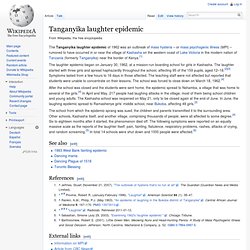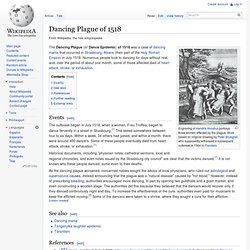

Ştiaţi că sub metropola americană Seattle există un oraş-subteran fantomă? Oraşele-fantomă s-au format din cauza dezastrelor naturale, epuizarea resurselor sau tot felul de accidente istorice.

Unele au dispărut, fiind transformate, dar unele s-au păstrat, ca dovadă a unei istorii care la un moment dat era vie, iar acum pot fi vizitate. Sub oraşul Seattle se află un oraş-fantomă care a fost acoperit de noua metropolă. Primele clădiri ale oraşului au fost din lemn, iar în 1889 oraşul a fost mistuit de un incendiu. Deoarece pompierul-şef nu era în oraş, departamentul de pompieri nu a fost coordonat bine, iar incendiul a distrus 31 de cartiere. Citeşte şi: Topul celor mai faimoase oraşe fantomă ale lumii Care a fost decizia autorităţilor? Iată un material video oraşele-fantomă ale Statelor Unite ale AmericiiAlte oraşe fantomă ale lumii. Top 10 Amazing Execution Survival Stories. Crime I thought it would be interesting to make a list to go along with Top 10 gruesome methods of execution and Top 10 modern methods of execution.

This list includes individuals that came face to face with death and their execution devices and because of fate or just plain luck were able to survive and live another day. Elizabeth Proctor circa 1652 In 1692 Elizabeth Proctor and her husband John were accused of witchcraft in the Salem Witch Trials. Interesting Fact: Over 150 people were arrested and imprisoned during the Salam Witch Trials. John Henry George Lee 1864 – circa 1945 In 1884 at her home at Torquay England, Miss Emma Keyse was bludgeoned to death with an axe, her throat slashed with a knife and her house set on fire. Interesting Fact: After some 23 years in prison Lee (now aged 41) due to constant pressure to review his case, was released in December 1907. In 1740, 16 year old William Duell was convicted of raping and murdering a girl in the village of Tyburn, London.
Born 1977. Tanganyika laughter epidemic. The Tanganyika laughter epidemic of 1962 was an outbreak of mass hysteria – or mass psychogenic illness (MPI) – rumored to have occurred in or near the village of Kashasha on the western coast of Lake Victoria in the modern nation of Tanzania (formerly Tanganyika) near the border of Kenya.[1] The laughter epidemic began on January 30, 1962, at a mission-run boarding school for girls in Kashasha.

The laughter started with three girls and spread haphazardly throughout the school, affecting 95 of the 159 pupils, aged 12–18.[2][3] Symptoms lasted from a few hours to 16 days in those affected. The teaching staff were not affected but reported that students were unable to concentrate on their lessons. The school was forced to close down on March 18, 1962.[4] The school from which the epidemic sprang was sued; the children and parents transmitted it to the surrounding area.
See also[edit] References[edit] Jump up ^ Jeffries, Stuart (November 21, 2007). External links[edit] Dancing Plague of 1518. Engraving of Hendrik Hondius portrays three women affected by the plague.

Work based on original drawing by Peter Brueghel, who supposedly witnessed a subsequent outbreak in 1564 in Flanders The Dancing Plague (or Dance Epidemic) of 1518 was a case of dancing mania that occurred in Strasbourg, Alsace (then part of the Holy Roman Empire) in July 1518. Numerous people took to dancing for days without rest, and, over the period of about one month, some of those affected died of heart attack, stroke, or exhaustion.
Events[edit] The outbreak began in July 1518, when a woman, Frau Troffea, began to dance fervently in a street in Strasbourg.[1] This lasted somewhere between four to six days. Historical documents, including "physician notes, cathedral sermons, local and regional chronicles, and even notes issued by the Strasbourg city council" are clear that the victims danced.[1] It is not known why these people danced, some even to their deaths. See also[edit] References[edit] External links[edit] Cât de mult aur există în lume. Poate părea surprinzător, însă dacă tot aurul din lume care a fost extras până acum ar fi topit și transformat în lingouri, el ar încăpea într-un cub cu latura de numai 20 de metri, relatează BBC.

Cel puțin, așa ar rezulta în cazul în care se ia în considerare estimarea făcută de Thomson Reuters GFMS, foarte utilizată de investitori. Thomson Reuters realizează anual un studiu privind aurul din lume, iar cea mai recentă cifră avansată este de 171.300 de tone de aur. Un cub realizat din 171.300 de tone de aur ar avea latura de 20,7 metri. Însă există și alte estimări ale cantității totale de aur din lume, estimări care variază de la 155.244 de tone până la 2,5 milioane de tone (de aproximativ 16 ori mai mult decât varianta Thomson Reuters GFMS).
Datele sunt atât de diferite deoarece aurul a început să fie extras cu peste 6.000 de ani în urmă, potrivit istoricului Timothy Green, mai notează BBC. Cât aur a mai rămas de extras: 52.000 de tone O altă estimare apariține Gold Standard Institute.